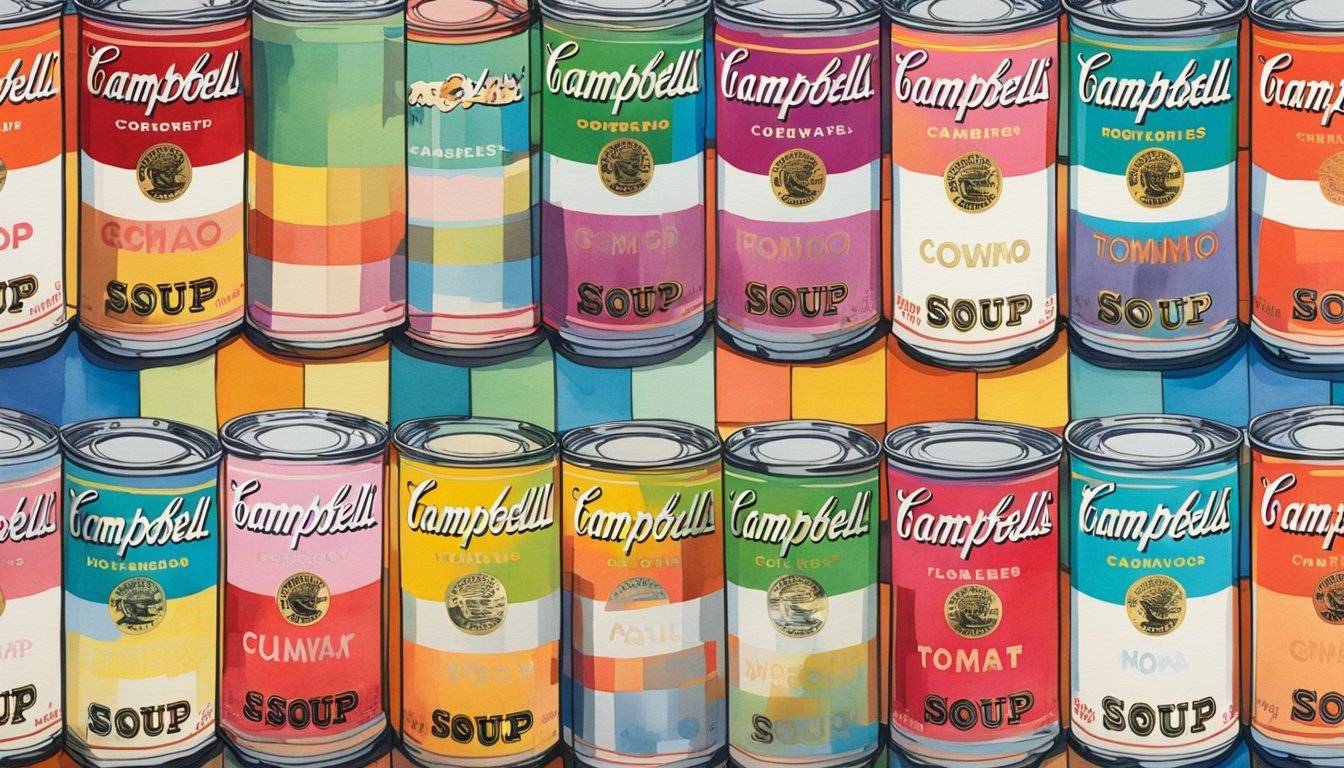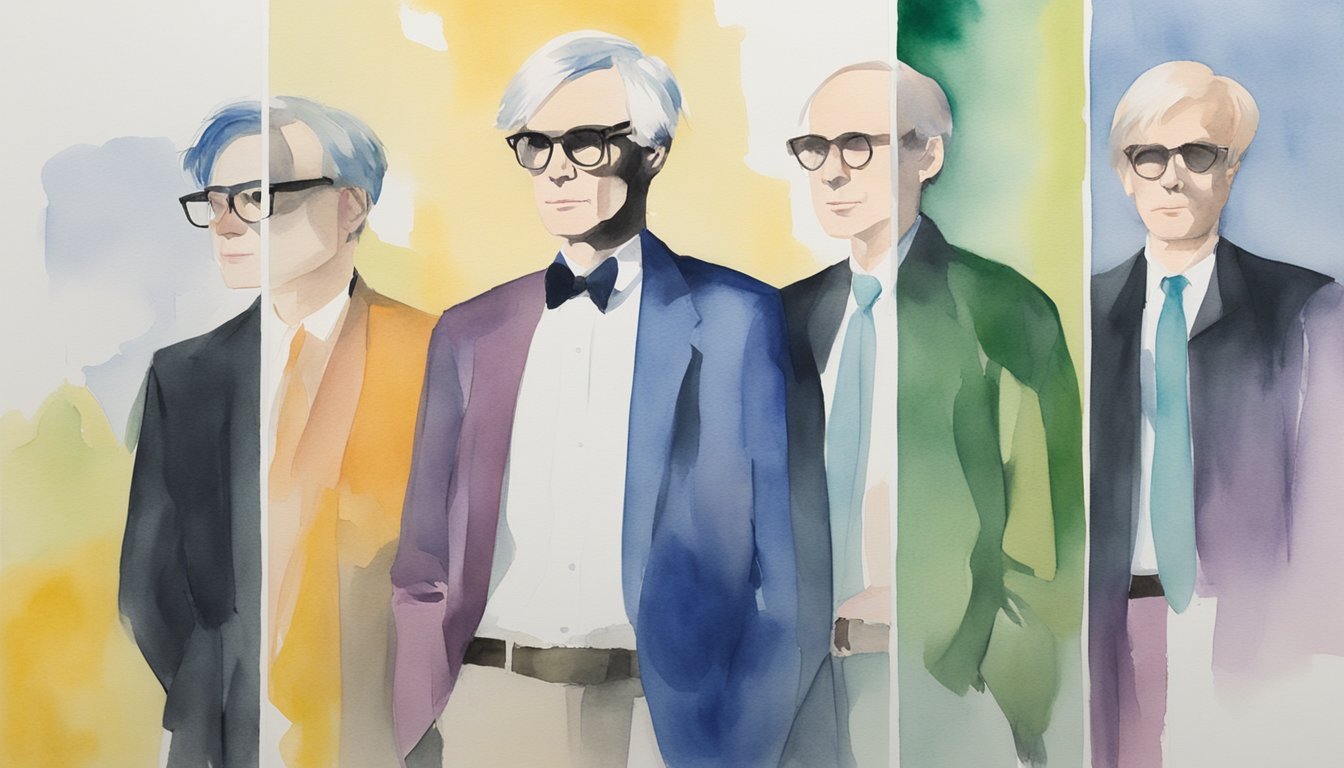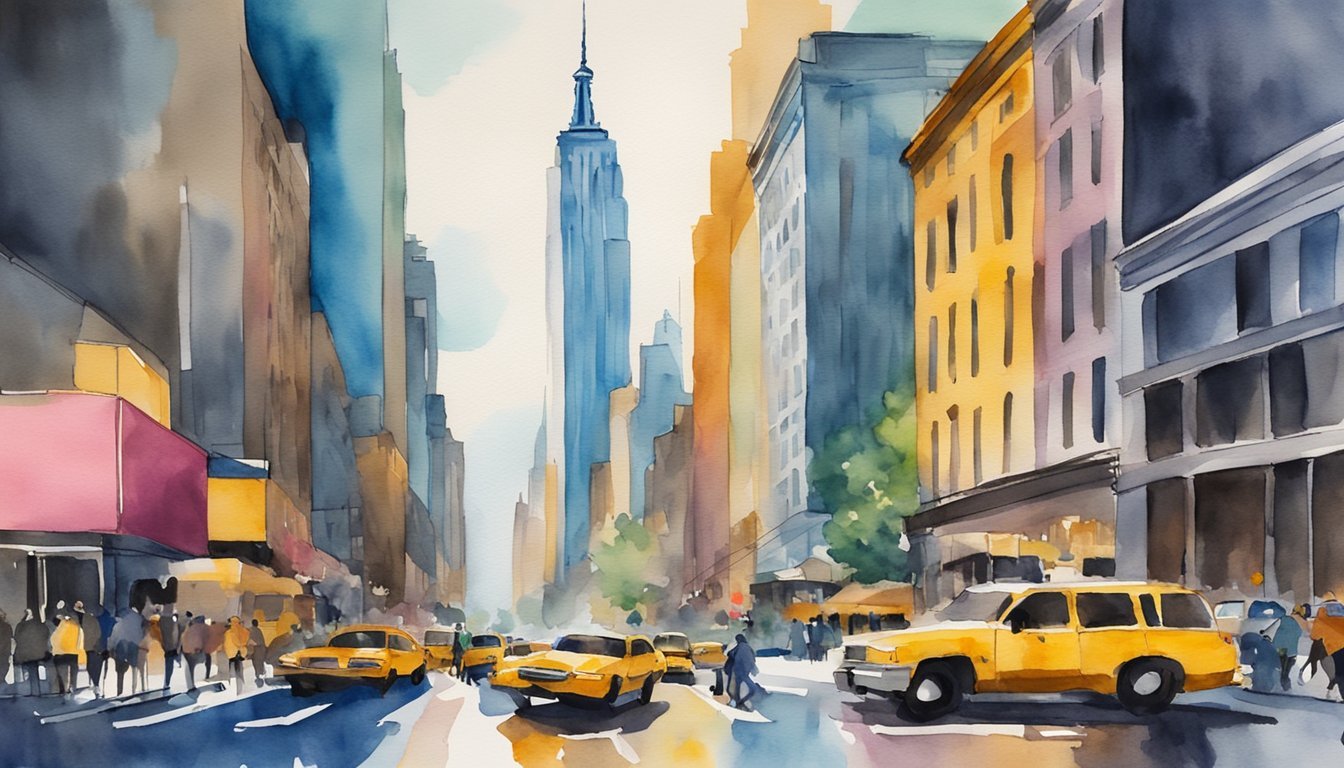Biography of Andy Warhol: The Pop Art Pioneer

Andy Warhol is one of the most iconic figures in the history of art, known for his influential role in the Pop Art movement. Warhol’s work forever changed the way people viewed art and culture, emphasizing the intersection of artistic expression, advertising, and celebrity.
Born Andrew Warhola Jr. on August 6, 1928, in Pittsburgh, he embarked on a remarkable journey that revolutionized modern art.

Warhol’s rise to fame began in the 1960s when he started experimenting with blotted line techniques and silkscreen printing.
His studio, The Factory, became a hub for artists, musicians, and creatives, fostering a unique atmosphere that blurred the lines between high art and popular culture.
The Factory saw the creation of Warhol’s most famous works, including the Campbell’s Soup Cans and portraits of Marilyn Monroe.
In addition to his paintings, Warhol was involved in various multimedia projects, including films and music.
His forward-thinking approach extended beyond the canvas, making him a pioneer in multimedia art forms.
Warhol’s impact on art and culture is unparalleled, and his legacy continues to inspire and influence new generations of artists and creatives.
Key Takeaways
- Warhol significantly impacted art by blending artistic expression with advertising and celebrity culture.
- His studio, The Factory, was a cultural hub that produced iconic works and attracted creatives.
- Warhol’s contributions to multimedia art solidified his status as a pioneering figure in modern art.
If you’re inspired to explore more about secret spiritual knowledge, feel free to check this unique resource 🌟
The former three may be put safely together, since they stand disconnected from all the rest.

Andy Warhol, an American artist, played a pivotal role in the Pop Art Movement.
Warhol’s early life in Pittsburgh shaped his innovative style.
Born as Andrew Warhola, he left a lasting legacy in the art world.
✅ Warhol’s notable works include:
- Campbell’s Soup Cans
- Marilyn Diptych
- Eight Elvises
These pieces stand out, as they reflect his unique take on consumer culture.
✨ Warhol’s art marks a significant shift.
The use of everyday items in his work challenges traditional art norms.
This approach set him apart from his contemporaries.
🎨 Warhol’s distinct style can be grouped together with other Pop Art legends like:
- Roy Lichtenstein
- Claes Oldenburg
- James Rosenquist
These artists’ efforts shine a spotlight on modern pop culture, separating them from other movements, such as:
- Abstract Expressionism
- Surrealism
- Dadaism
The influence of Warhol’s work remains significant.
His screen-printing techniques and bold use of colors paved the way for future artists.
Explore how Warhol’s life was also filled with secret spiritual knowledge 🧘♂️.
This aspect adds another layer to understanding his creative genius.
Andy Warhol’s connection to popular culture is unmatched.
He turned mundane objects into thought-provoking pieces of art.
His exploration of fame and consumerism continues to resonate today.
Rise to Fame
Andy Warhol’s rise to fame is marked by his work in commercial illustration, his breakthrough into Pop Art, and his creation of famous works that integrated advertising and consumer goods.
Commercial Illustration
In the 1950s, Andy Warhol began his career as a commercial illustrator in New York City.
He worked on advertisements and window displays for major department stores.
This experience honed his unique style and brought him into contact with influencers in the art world.
Warhol’s illustrations were often whimsical and distinctive, using a blend of hand-drawn lines and rubber-stamping techniques.
Clients loved his work, and he quickly became one of the most sought-after illustrators.
By the end of the decade, he had won several awards for his magazine and advertising illustrations.
This set the stage🌟 for his future success in the art world.
Breakthrough with Pop Art
The 1960s marked a turning point in Warhol’s career.
He transitioned from commercial illustration to fine art, focusing on Pop Art.
Warhol began to create pieces that addressed consumer culture and mass production.
His work often featured common objects and iconic figures, such as the famous Campbell’s Soup Cans and Marilyn Monroe prints.
Warhol’s art was characterized by its bold colors and repetition.
His studio, known as The Factory, became a hub for artists, musicians, and socialites.
This period solidified Warhol’s role as a leading figure in Pop Art.
Famous Works
Warhol’s most famous works include the Campbell’s Soup Cans, which debuted in 1962.
This series consists of 32 canvases, each featuring a different flavor of Campbell’s soup.
They highlight the blend between art and commercial products.
Another iconic series is his Marilyn Monroe prints, created shortly after her death in 1962.
Warhol used a publicity still from her film “Niagara” and reproduced it in vibrant colors.
These works demonstrate Warhol’s fascination with fame and celebrity culture.
His later works included portraits of various celebrities and socialites, securing his place as one of the most influential artists of the 20th century.
For more on how Warhol’s work ties into spiritual and cultural knowledge, check here.
New York and The Factory

Andy Warhol’s time in New York was defined by his famous studio, The Factory.
This studio, known for its stylish design and eclectic gatherings, played a crucial role in his career and the art world.
Establishing The Studio
Andy Warhol’s studio, called The Factory, was set up in New York City.
It became operational in 1962 and was located on the fifth floor at 231 East 47th Street.
The space was nicknamed the Silver Factory because Warhol and his friends covered it in silver paint and aluminum foil.
The Factory wasn’t just a workspace.
It was a hub where many creative minds, including artists, musicians, and celebrities, gathered.
Famous Warhol Superstars were often seen there.
The studio hosted lively parties and became a cultural landmark.
Silver Era
The years between 1962 and 1967 are often referred to as the Silver Era of The Factory.
It was during this time Warhol embraced a distinctive artistic style.
He used silkscreening techniques to mass-produce images, making art more accessible.
One of his notable works from this period is the Silver Car Crash (Double Disaster), which is famed for its haunting depiction of a car crash.
Films were also a big part of the Silver Era.
Warhol created hundreds of short films in black and white.
These films often featured his friends and visitors, capturing the unique vibe of The Factory.
He managed to film 472 portraits of artists during this period (learn more).
Warhol Superstars
The celebs and personalities who orbited around Warhol at The Factory were dubbed the Warhol Superstars.
These individuals were often part of his art, appearing in films, art projects, and attending events.
Names like Edie Sedgwick, Baby Jane Holzer, and Nico from The Velvet Underground became famous as Warhol Superstars.
These superstars weren’t just muses or actors.
They were essential to the Factory’s vibrancy.
Their presence added to the studio’s reputation as a place of cutting-edge creativity and celebrity culture.
The Factory was more than just a studio; it was a legendary space that marked an era of bold artistic exploration.
For those interested in secret spiritual knowledge, check out this link for more interesting insights. 🌟
Artistic Innovations
Andy Warhol was famous for his unique techniques like silkscreen printing and innovative sculptures, which changed the world of fine art and shaped new ways to express artistic ideas.
Silkscreen Technique
Andy Warhol was well-known for his groundbreaking use of the silkscreen technique.
He used this method to create his famous paintings of celebrities and everyday objects.
Silkscreening involves pressing ink through a stencil on a mesh screen.
One of Warhol’s most iconic works using this technique is his Marilyn Monroe series. 🖼️ This series shows multiple images of the actress in various colors, emphasizing how media reproduces celebrity images.
Warhol liked the repetition and uniformity this technique offered, making each piece both a single artwork and part of a larger series.
Silkscreening allowed him to produce works faster, mimicking the commercial production methods he found fascinating.
Explorations in Sculpture
Though best known for his paintings, Warhol also made significant contributions to sculpture.
He loved playing with consumer culture and made sculptures of everyday objects like Brillo boxes and soup cans. 🥫
One example is his Campbell’s Soup Cans, where he painted and sculpted replicas of the iconic can design.
He used the blotted line technique, which involved drawing with ink then pressing the paper to create a broken line effect.
This gave his sculptures and prints a distinctive look.
In each sculpture, Warhol combined artistic expression with irony, reflecting the commercial culture around him.
This interplay of art and commerce is what makes his sculptures important in understanding his overall body of work.
Explore more about Warhol’s secret spiritual knowledge and how it influenced his artistic journey.
Involvement in Multimedia
Andy Warhol was a pioneer in various forms of multimedia.
His influence stretched from music and performance art to film production and publishing.
Music and Performance Art
Warhol’s work with the Velvet Underground band cemented his place in the music world. 🎸 The band’s avant-garde style and unique sound were complemented by Warhol’s innovative light shows, famously known as the Exploding Plastic Inevitable.
These shows were a mix of music, dance, and visual art, creating a sensory experience for the audience.
Warhol also produced the band’s debut album, which featured the iconic banana cover.
His involvement extended beyond production; he played a significant part in the band’s performances as well.
The collaboration between Warhol and the Velvet Underground left a lasting impact on the music and performance art scenes.
Film Production
Warhol ventured into filmmaking with a bold and experimental approach. 🎬 He created more than 60 films between 1963 and 1974.
Some of his notable works include “Chelsea Girls” and “Empire.”
His films often explored the mundane and the everyday, challenging traditional narratives.
Warhol’s influence in the film industry also extended to his involvement in producing commercial films like “Andy Warhol’s Frankenstein” and “Andy Warhol’s Dracula.” His raw and unorthodox style of filmmaking continues to inspire filmmakers today.
Publishing Pursuits
Besides visual and performance art, Warhol was also influential in publishing. 📰 In 1969, he founded Interview Magazine, a publication focusing on celebrity culture and the arts.
The magazine featured interviews with prominent artists, musicians, and actors, often conducted in a conversational and informal style.
Warhol’s interest in publishing wasn’t limited to Interview Magazine.
He also wrote several books and was involved in photography, capturing snapshots of his life and the people around him.
His publishing efforts contributed to the broader cultural landscape, bridging the gap between various art forms.
His involvement in multimedia not only showcased his versatility but also expanded the horizons of contemporary art.
Through his work, he melded different art forms, leaving a lasting legacy.
Celebrity and Cultural Impact
Andy Warhol was not just an artist; he was a cultural icon, known for his unique approach to celebrity culture and fame.
His artwork and personal philosophy on fame helped shape how society views celebrities today.🎨✨
Icon of Celebrity Culture
Andy Warhol’s persona was larger than life.
He became an icon of celebrity culture through his engaging personality and frequent social appearances.
Warhol was often seen at glamorous parties with famous figures like Mick Jagger, who became subjects of his famous portraits.
His artwork often featured celebrities, presenting them in a way that highlighted their iconic status.
His Campbell’s Soup Cans and Marilyn Monroe portraits are prime examples.
Warhol believed in the power of repetition and mass production to elevate ordinary objects and people to celebrity status.
He famously said, “In the future, everyone will be world-famous for 15 minutes.”
Philosophy on Fame
Warhol’s thoughts on fame were both revolutionary and reflective.
He explored these ideas in his book, “The Philosophy of Andy Warhol”.
Warhol argued that fame could be fleeting, encapsulated in his famous quote about 15 minutes of fame, a concept that rings true today with internet virality.
He viewed fame as a central part of modern life, blending artistic expression with the notion of celebrity.
Warhol’s fascination with fame included the darker aspects, such as how it could distort personal identity.
For those interested in deeper insights, exploring the intersection of fame and spirituality might be enlightening (more details here).💫
Warhol’s Worldview

Andy Warhol’s perspective on consumer culture and artistic creation shaped his unique legacy.
His work reflects his views on consumerism and artistic self-expression, often using everyday objects and celebrities as his subjects.
Consumerism Commentary
Warhol often used common commercial items to make a statement.
He became famous for his Campbell’s Soup Cans, turning an everyday product into a symbol of consumer culture.
By using familiar brands like Coca-Cola, Warhol commented on the omnipresence of advertising.
To Warhol, these products represented a shared cultural experience.
He saw the uniformity and accessibility of these items as a form of equality, where anyone could enjoy the same products regardless of their social status.
This perspective is detailed in his book, Popism: The Warhol Sixties, where he explores the relationship between consumer goods and art.
Warhol’s approach to commercial items helped to blur the lines between high art and popular culture, making art more accessible.
Artistic Expression
Warhol’s techniques differed from those of traditional artists.
He used mass production methods like silk screening to create his art.
This method allowed him to produce multiple versions of the same image quickly, reflecting the mass production processes of consumer goods.
Warhol’s choice of subjects also reflected his worldview.
From Marilyn Monroe to Elvis Presley, he often chose celebrities who were products of modern media.
The repetition of their images in his work highlighted their fame and the power of media in creating public personas.
Warhol’s studio, known as The Factory, also embodied his artistic philosophy.
It was a creative space where artists, musicians, and celebrities mingled, further blending the lines between art and everyday life.
Through his work and his lifestyle, Warhol showed that art could come from anywhere and be about anything.
Attempt on Warhol’s Life
On June 3, 1968, artist Andy Warhol faced an almost fatal attack.
Valerie Solanas, an acquaintance and radical feminist, shot Warhol at his studio, The Factory.
This event was a shocking and critical moment in his life.
Valerie Solanas shot Warhol three times.
Warhol was severely injured, and his recovery took months.
The attack influenced his art and life deeply.
The incident marked a turning point for Warhol.
He distanced himself from his usual circle.
The Factory, once a hub of wild creativity, became more controlled.
Warhol’s work after the attack showed a shift in style and themes.
The trauma and ongoing health issues influenced his perspective.
This event emphasized the personal risks faced by public figures.
Warhol’s experience highlighted the tension between fame and safety. 🖌️
Discover Secret Spiritual Knowledge 🌟
Legacy and Influence
Andy Warhol’s impact continues to resonate in modern art and culture.
His work has not only shaped the pop art movement but also inspired numerous exhibitions and institutions dedicated to preserving his legacy.
Pop Art Movement Legacy
Warhol’s contributions to the pop art movement are undeniable.
By using everyday objects and celebrity images, he challenged traditional notions of art.
His famous works like the Campbell’s Soup Cans and Marilyn Monroe portraits made art more accessible and relatable to the public. 🖼️
He blurred the lines between commercial and fine art, elevating ordinary items to iconic status.
His “15 minutes of fame” quote underscores his belief in the fleeting nature of celebrity.
Warhol was a true bellwether of the art market, often setting new records at auctions.
His influence reaches beyond visual art, impacting fashion, music, and film.
Andy Warhol Museum
Located in Pittsburgh, the Andy Warhol Museum is the largest museum in the U.S. dedicated to a single artist.
It houses a massive collection of Warhol’s works, including paintings, sculptures, and films.
The museum also offers educational programs and interactive exhibits. 🎨
Visitors can explore his life, from his early days to his status as an art world superstar.
The museum also hosts retrospective exhibitions, which provide insight into Warhol’s evolving artistic style.
It serves as a vibrant center for contemporary art, continually inspiring new generations of artists and fans alike.
Death and Posthumous Fame
Andy Warhol passed away on February 22, 1987, in New York City.
He was admitted to New York Hospital after a gallbladder surgery but suffered complications which led to his death.
His cause of death was cardiac arrhythmia. 🌆
Warhol’s funeral was held at St. Patrick’s Cathedral in New York City.
The event was attended by numerous celebrities and public figures, reflecting his massive influence in the art world.
After his death, Warhol’s artworks became even more collectible.
His pieces, especially the famous Campbell’s Soup Cans and Marilyn Monroe portraits, are considered some of the most expensive paintings in the art market 🎨.
An example of his posthumous fame is seen in the sale of one of his pieces, which fetched an enormous amount at an auction.
Collectors and fans continued to celebrate his contributions to art and culture.
Many of his works are held in the highest esteem and displayed in major museums and galleries.
Warhol’s legacy is not only in his art but also in popular culture.
His impact goes beyond paintings; he is a key figure in understanding the blend of celebrity and art during the 20th century.
For those seeking more knowledge about the spiritual aspects of his work, check out this secret spiritual knowledge.
Key Points:
- Died of cardiac arrhythmia
- Funeral at St. Patrick’s Cathedral
- Art became highly collectible and valuable
- Huge influence on art and pop culture






